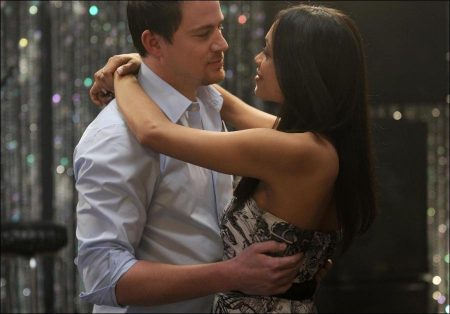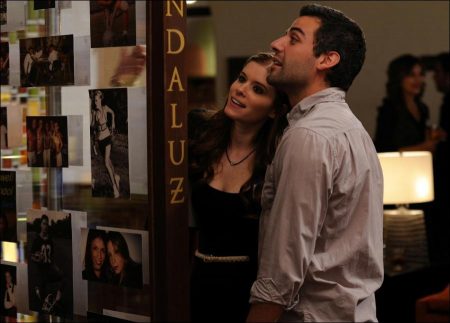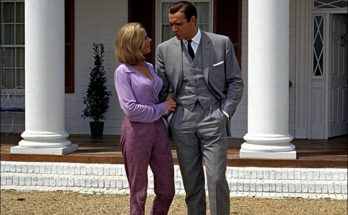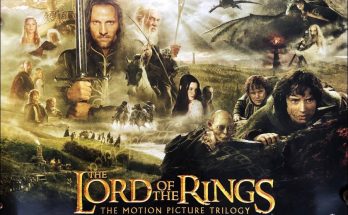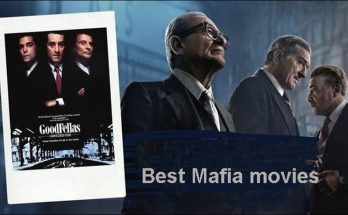10 Years: Q & A with writer and director Jamie Linden. Channing Tatum plays Jake, who is deeply in love with his girlfriend (Jenna Dewan-Tatum) and ready to propose–until he runs into his high school flame (Rosario Dawson) for the first time in years. Jake’s friend Cully (Chris Pratt) married his cheerleader girlfriend (Ari Graynor), and has been looking forward to the reunion so he can apologize to all the classmates he bullied in high school.
However, after a few too many drinks, the jock-turned-family man ends up reverting back to his old ways instead. Meanwhile, longtime rivals Marty (Justin Long) and A.J (Max Minghella) spend the night picking up right where they left off, vying to impress the hottest girl in class (Lynn Collins). The famous one of the group, Reeves (Oscar Isaac) is now a rock star, but is still too shy to talk to his high school crush (Kate Mara).
What was your inspiration for the film?
This is going to blow some minds, but believe it or not the inspiration came from going to my own ten year high school reunion. For a while now, I’d wanted to try to make a large ensemble movie. They have a high degree of difficulty, but the ones that are done well are some of my all-time favorites, and some of the most rewatchable movies of all time, too. I’m thinking of films like American Graffiti, or Diner, or The Big Chill.
As a writer first and foremost, I liked the challenge of trying to write a script with a big cast, and trying to make an audience care about a whole handful of characters and storylines instead of just one. After going to my own reunion, it occurred to me that this would be as good an excuse for a large ensemble as anything. It might not be the most original setting in cinematic history, but I was much more interested in the characters anyway. If the movie was inspired by your own reunion, then how autobiographical is the finished product?
The reunion in the movie superficially resembles mine as far as the size and style of it. The characters went to a high school which is named after my high school back in Orlando, Florida. And after the reunion they go to a dive bar which is the named after the bar we went to after our reunion. But none of the characters are based on real people, or people I went to high school with. They were all created and formed in collaboration with the actors.
How did the film get off the ground? What was the process of getting the film made?
A couple of years ago, a bunch of us made the movie Dear John together. Myself, Channing Tatum, the producers at Temple Hill (Marty Bowen, Wyck Godfrey, and Adam Londy), and also my friend Scott Porter, who’s an actor that happened to go with me to both Lake Howell and our ten year reunion, which had taken place not long before the Dear John shoot. Channing’s producing partner Reid Carolin came to set for a week or two and we were all hanging out after work one night and I mentioned I was thinking about writing a ten year reunion movie based on mine and Scott’s experience, and that was pretty much it.
I wanted to try directing, and Channing and Reid were looking for their first producing project and we all wanted to work with Marty and Wyck again. So I wrote a loose script, we went and shot a little short film one day to show people the style we were going for, and then we met with Eric Gores, who understood it completely and was good enough to write us a check so we could just go off and make the film.
The film is truly an ensemble project. How did you cast it?
Well, we didn’t cast it, exactly, at least not in the traditional sense of the word. We didn’t even have a casting director. The whole idea was to subvert the process-instead of writing roles and then going out and finding actors to fit into those roles, we picked actors we wanted to work with up front, and then we’d create the characters together. So basically we talked to friends we liked and had worked with before, figured out characters and storylines that interested all of us, and I went off and wrote something resembling that. And then I wrote a few parts for actors who I admired but didn’t really know, like Justin Long and Chris Pratt.
At some point along the way I’d meet with them and tell them about the movie and the process and I just crossed my fingers they’d say yes. Of course, by the time we finally had everything in order to shoot the film, a couple of the actors couldn’t make their schedules work out so we had to replace them, but even then I met with other actors I liked and we talked about what to do with their roles and we changed things around together. The movie’s really an actor’s piece, so the whole idea was to make the process as collaborative as possible.
How long was the shoot? Where did you shoot?
We shot for about five weeks in Albuquerque, New Mexico. One of our goals from the beginning was to film the movie chronologically. That way, since the script was so loose, we could make changes on the fly as we progressed. So we designed the movie with that in mind, keeping our locations to a minimum and keeping everybody around for the whole shoot in case we wanted to add characters to scenes or change things up.
We filmed the reunion itself at the Hotel Andaluz in downtown Albuquerque, which is also where the entire cast and crew stayed during the shoot. We basically took over that hotel. It was nice to be able to take an elevator down to work, and it definitely helped to foster a sense of intimacy on set and amongst the cast. It felt like sleepaway camp, only with more alcohol. It was pretty chaotic. I felt bad for the people whose job it was to keep things organized. You both wrote and directed this film. Which process do you enjoy more?
Both. Or neither. I don’t know. Screenwriting is what I do for a living. I’ve been at it for almost eight years now, and by this point I have a pretty decent idea of what I’m good at and what I’m not so good at. I don’t like how solitary writing tends to be, but it is nice to be completely in control of something, even if it’s just a screenplay that will ultimately morph into something else as it gets filmed and edited. I’d never directed a movie before, though, so I had to kind of start over and learn what I was good at and what I wasn’t so good at. I liked how collaborative it was and I liked being around a bunch of people all day and I loved working with the actors.
Related Link: View the Full Production Notes for 10 Years
Visits: 63
